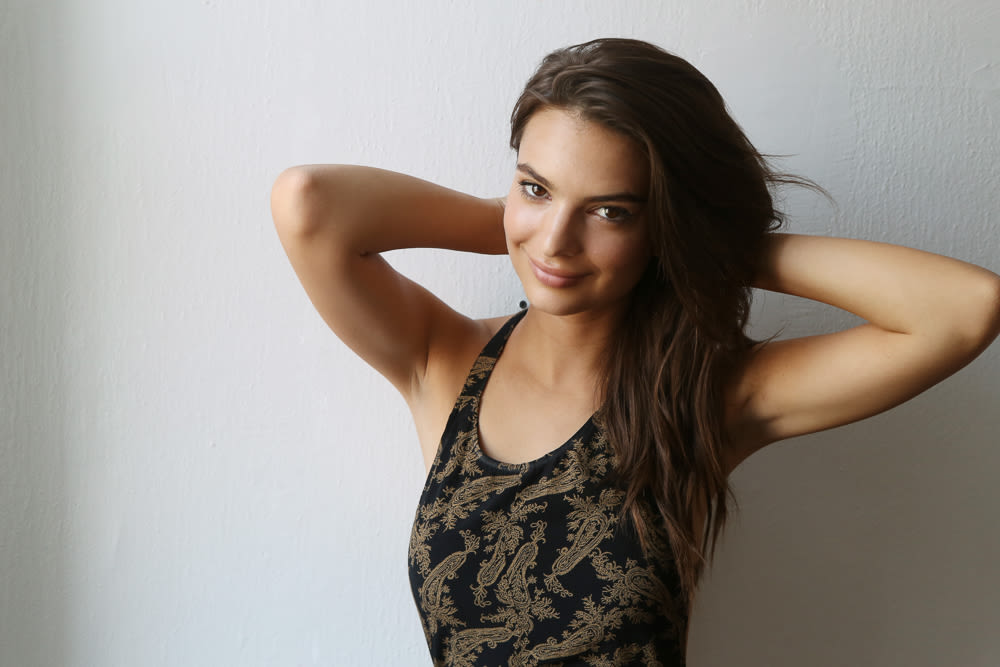
In 2013, the music video “Blurred Lines” by Robin Thicke, Pharrell Williams, and T.I. became one of the most talked-about — and controversial — pop phenomena of the decade.
At its center was Emily Ratajkowski, better known as EmRata, whose appearance in the video propelled her into international fame almost overnight.
But as time passed, this catchy hit evolved from a chart-topping anthem into a focal point of discussions about sexual representation, consent, and media ethics.
Today, the phrase “EmRata Blurred Lines” continues to trend — not just for nostalgia, but because it reflects how blurred the boundaries between empowerment and exploitation can be.
Emily Ratajkowski, an American model and actress, became a household name after appearing in the “Blurred Lines” music video.
Before that, she had modeled for fashion brands and appeared in magazines, but the viral video exposed her to a massive global audience.
Her confident yet controversial appearance — topless in parts of the “unrated” version — ignited debates about women’s agency, objectification, and the price of fame.
The song’s upbeat tone and catchy rhythm masked lyrics that many listeners found problematic. Phrases like “I know you want it” were interpreted by critics as blurring the line between flirtation and coercion, leading to widespread criticism and even bans from several university campuses.
When Emily Ratajkowski later shared her personal experiences during the shoot — revealing that she was inappropriately touched by Robin Thicke without consent — the story reignited public outrage.
Her memoir “My Body” offers a candid reflection on how this incident shaped her understanding of power, autonomy, and self-image in a male-dominated industry.
The reason this topic keeps trending is simple:
It sits at the intersection of pop culture, gender politics, and media perception — areas that continue to evolve as society redefines boundaries around consent, art, and freedom.
EmRata has since used her platform to advocate for women’s rights and creative ownership, often discussing the challenges of reclaiming control over her image — both in photography and online media.
At BlurredText.com, we explore how text, imagery, and digital expression intersect with modern online culture.
Just as “Blurred Lines” challenged viewers to reconsider what’s visible and what’s hidden, our tool — Blurred Text Online — allows users to conceal or highlight words intentionally, blending privacy, art, and message control in creative ways.
By using our text-blurring tools, creators can protect sensitive content, emphasize key phrases, or express ambiguity — much like how “Blurred Lines” became a metaphor for mixed messages in media.
“EmRata Blurred Lines” is more than a viral memory — it’s a case study in how digital visibility and public narratives can shape someone’s career and identity.
Emily Ratajkowski’s transformation from “the girl in the video” to a powerful author and advocate shows how blurred beginnings can evolve into clear voices.
At BlurredText.com, we believe in empowering creators and thinkers to control their narratives — because sometimes, what you choose to blur says as much as what you choose to reveal.
👉 Try our Blurred Text Online Tool to blur, stylize, or protect your digital text.
👉 Read more articles that explore art, media, and digital culture in the age of AI and social awareness.
Media Reports And Links:
Transform Your Visuals with Blurred Text Online — A Smarter Way to Create Stunning Designs
How “Blurred Text Online” Became the Secret Design Trick Everyone’s Using
✨ Why “Blurred Text Online” Is the Secret Ingredient Behind Clean, Modern Visual Design
Blurred Text Online – The Smart Way to Protect Your Game Screenshots and Creative Images
✨ The Power of Blurred Text Online: Why Designers and Creators Love This Smart Tool
How Blurred Text Art Connects Modern Creativity with Ghibli’s Dreamlike Aesthetics